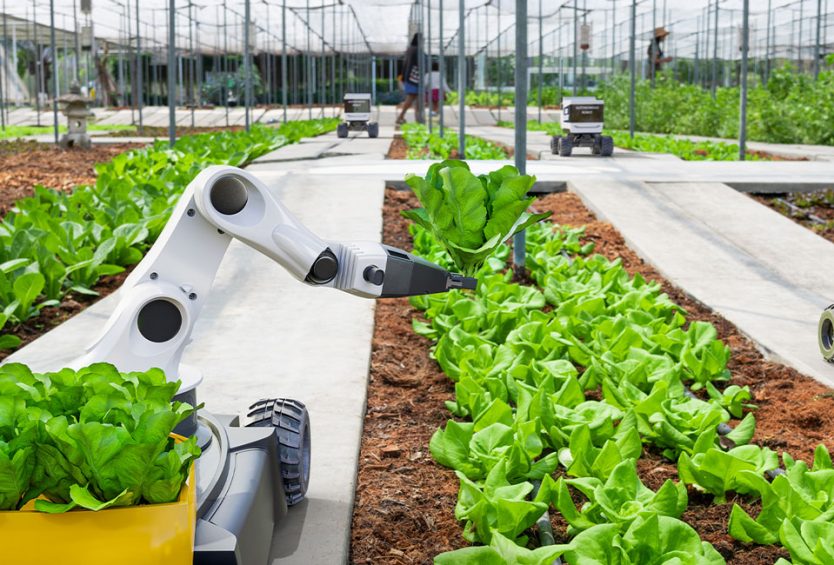Before referring to “Green manufacturing”, we will likely be more familiar with “lean manufacturing”, an effective method for eliminating waste from production operations and improving the company’s finances.
Along with the continuous development of science and technology, AI and IoT have contributed to the optimization and paving the way for green production to appear, helping to integrate environmental considerations into inherent lean initiatives, creating new production processes from input materials to output products that maximize. be environmentally friendly and reduce the risks and harms to human health.
In the face of the impact of climate change, environmental pollution, resource depletion, and most recently in the face of concerns after the Covid-19 pandemic, the wave of green consumption – green production is becoming increasingly popular globally and becoming an inevitable trend that businesses cannot ignore.
Green production in the world
According to CleanTechnica, the term “green” production can be considered in two aspects: the production of “green” products, especially those used in renewable energy systems and clean technology equipment of all kinds, and the “greening” of production that helps reduce pollution and waste by minimizing the use of natural resources, recycle and reuse what is considered waste and reduce emissions (1).
In Europe, green production and sustainable development programs are especially focused. In the period of 2021 and 2022, the EU will make various important amendments to key laws and additional policy tools. In addition, the COVID-19 recovery fund is being distributed, with a minimum of 37% of the EU budget being earmarked for green transition (3).
In the U.S., according to data on the Low Carbon and Environmental Goods and Services Sector (LCEGSS), the green economy generates $1.3 trillion in annual revenue, while creating 9.5 million full-time jobs.
From 2015 to 2019, sustainable products accounted for more than half (54.5%) of growth in the packaged consumer goods sector (NYU Stern Sustainability Business Center report), 45% of consumers have started to make more sustainable shopping choices after the arrival of Covid (2).
More and more large companies are aiming for green production and sustainable development, such as McDonald’s, with plans to use 100% of customer packaging by 2025 made from renewable, recycled sources or from certified materials. In 2020, 70% of the company’s fiber-based packaging will come from recycled sources or from certified materials.
The response to sustainable development policies is not only supported by companies in major industrial manufacturing sectors but also from companies in the fields of fashion such as Nike, Adidas, Zara, H&M, Levi’s,…
Green manufacturing trends in Vietnam
Along with the global trend, Vietnam is also moving towards policies to promote the sustainable development of the green economy. On January 30, 2022, the Government Office issued Notice No. 30/TB-VPCP on the Conclusion of the Prime Minister’s implementation of the commitment at the 26th Conference of the Parties to the United Nations Framework Convention on Climate Change (COP26) (4). Here, Vietnam has made strong commitments such as bringing net emissions to “zero” by the middle of the 21st century; reduce global methane emissions by 2030; Glasgow declaration of leaders on forests and land use; to participate in the Global Declaration on the conversion of coal power to clean energy; join the Global Adaptive Action Alliance.
At the same time, propose specific programs and projects along with capital needs, science and technology transfer, human resources in order to deploy the action plan to enforce the commitment. Vietnamese enterprises in industries such as Wood, Textiles, Food and Beverage Services, etc. also implement green, environmentally friendly production models, use certified, legal raw materials and prioritize the distribution of “green” products, using environmentally friendly packaging.
Top 4 benefits of green manufacturing
Reduce costs
Adopting green production programs makes it possible for businesses to reduce costs in many ways, such as reducing water use and cutting waste treatment needs or installing energy-efficient lighting systems to reduce electricity costs in the long term.
In fact, a 2014 study by Indiana University found that the transition to sustainable manufacturing saves a business $7 billion, while another could save $80 million per year by saving energy.
Attract new customers and increase sales
The implementation of green and sustainable production strategies is one of the advantages for the marketing program of the business, helping to promote the image and raise brand awareness. The introduction of green, environmental, sustainable initiatives or practices will help attract brand new visitors and strengthen the reputation of the business, leading to sales growth.
This is important for manufacturers looking to sign contracts with the government, where green production standards are often a factor.
Promoting the spirit and innovation of the workforce
By internally communicating the importance of changes and the impact of green manufacturing on the environment and business, manufacturers will positively influence their corporate culture. Sustainable development improves collaborative efforts and linkages between workers. Employees working together under the same goal of establishing and implementing green and sustainable strategies will help promote a culture of teamwork and continuous improvement.
Employees work harder when they are engaged and have a sense of pride in their company. In addition, the working age group of generations Y and Z is also increasingly concerned about the environment, and shows a willingness to work and contribute more to companies that are socially and environmentally responsible. In fact, in the U.S., the increase in jobs in the clean energy sector in 2018 grew at a rate of 3.5%, with about 110,000 new jobs (5).
Positive impact on society
In addition to helping your own business, taking action to implement green and sustainable production can make a real difference. Implementing changes that will help smaller carbon emissions and reduce the amount of toxins released into the atmosphere will provide a social future with better changes. Future generations will eventually have hopes of benefiting from improved air and water quality, fewer landfills and more renewable energy sources instead of the threat from polluted habitats.
The first 3 steps in green production implementation
So where do businesses need to start to achieve a green and sustainable strategy, to make their businesses environmentally friendly? Here are some suggestions for businesses that are in the early stages of their Go Green path.
1. Analyze the current environmental impacts of your business
The first step to becoming a more sustainable organization is to understand the current state of your business, starting by analyzing energy use, determining how these sources are used in the manufacturing process, and how they can affect the environment. Another important factor to consider is the amount of water consumed during the production business.
Then look at the materials in use in stores and factories: Are they recyclable or toxic? How necessary are they to the production process? Asking these questions can help clarify the current state of the business’s environmentally friendly level as well as identify future options. Knowing where your organization stands will help take steps toward a more environmentally friendly facility.
2. Minimize waste to the maximum extent possible
Waste reduction can start with small changes such as noticing the effectiveness of using machinery, power sources, or recycling paper and plastic in offices and factories. These small daily changes are a starting point for longer-term action plans in the business.
Then consider the materials used in the manufacturing process. With raw materials and only partial use, businesses should research and learn new methods to help take advantage of the rest of the raw materials, resell or exchange with where they need to go instead of throwing away the excess parts and help them save costs, and also help to take advantage of the new value of raw materials.
Expanding regular monitoring of resources can help businesses start thinking sustainably, and make bigger and better changes. Document your efforts and be transparent about these efforts with employees and customers to build sustainable marketing programs.
3. Find ways to take advantage of renewable energy
Leveraging renewable energy is one of the best ways to create a more sustainable base. Renewable energy options are plentiful, they include sunlight, wind, rain, tides, waves and geothermal heat. According to an analysis by Clean Jobs America in 2019, by 2035, renewable energy is expected to become a prominent energy source in the world.
According to statistics, by 2020, solar energy costs have fallen to historically low levels, as technology and innovation help reduce costs. Large corporations such as Walmart and Anheuser-Busch InBev have taken action by deploying renewable energy systems because it is cheaper than traditional energy sources for larger stores.
Implementing green production is one of the important factors creating advantages for Vietnam to participate in the value chain of multinational corporations. However, the construction and transformation into green enterprises is not an overnight affair, but requires support, mechanisms and policies from State agencies. At the same time, businesses also need to outline for themselves the development strategy as well as build and disseminate culture, sense of responsibility to get a clear roadmap on the path of building a green business.
Reference
(1) CNBC. 2019 US ‘green economy’ generates $1.3 trillion and employs millions, new study finds
(2) Thomasnet. 2020 Green Manufacturing: The Business Benefits Of Sustainability
(3) Weforum. 2021 Paving the Way:EU Policy Action for Automotive Circularity
(4) Government Newspaper. Expeditiously develop a project to implement Vietnam’s commitments at COP26
(5) E2. Clean Jobs America Report



